PCI_PCIe_miniPCIe规格说明
PCI
PCI是一种本地总线(并行),规格书名称:PCI Local Bus Specification。并行总线,插槽规格统一。
PCI stands for Peripheral Component Interconnect. It is a hardware bus that helps to add internal components to a desktop computer. It uses a parallel bus structure. Moreover, it is possible to insert a PCI card to a PCI slot on a motherboard to provide additional IO ports.
PCI architecture is also known as conventional PCI. This technology was introduced in 1992 by Intel. In earlier computers, there were two to five PCI cards. Each card required an open slot on the motherboard. Furthermore, it required a removable panel on the back of the system unit. Adding PCI cards was an easy way to upgrade a computer because it helps the users to add better video cards, faster wired or wireless networking or add new ports like USB 2.0.
The original 32bit, 33MHz PCI standard was capable of sending and receiving data at a rate of 133Mbps. The 64bit, 66MHz is an upgraded standard that supports a faster data transferring rate at a frequency up to 533 MHz. In the year 1998, the organizations IBM, HP, and Compaq introduced PCI –X (PCI extended). It provides a data transferring rate up to 1064MHz. Furthermore, it is backward compatible with PCI.
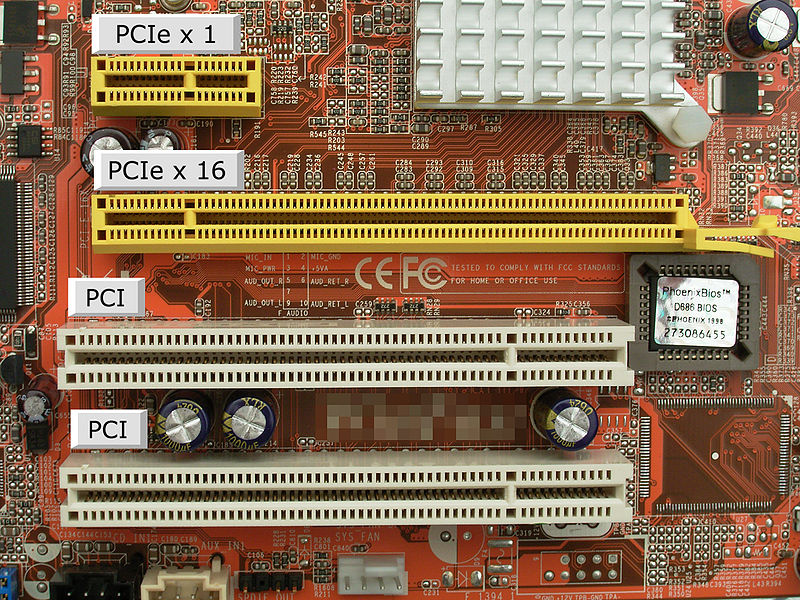
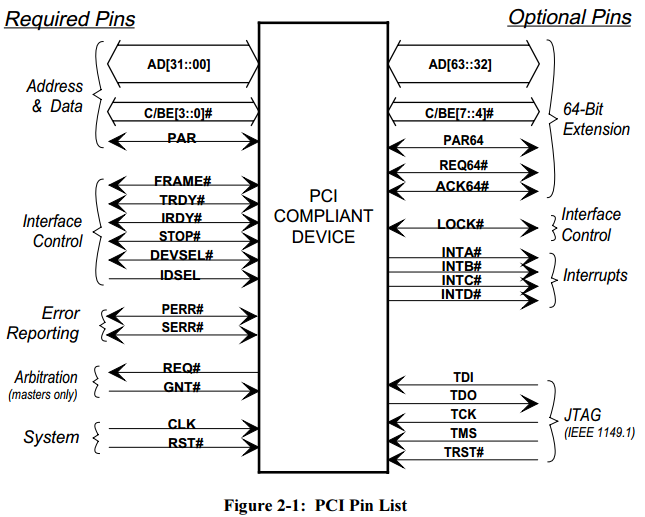
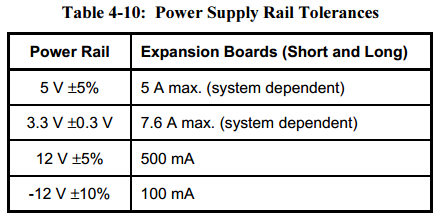
PCI共94*2pin(金手指双面),支持5v和3.3v两种信号电平,可提供5V或3.3V或两种都支持。
PCI Express
PCI Express是PCI的新版本,规格书:PCI Card Electromechanical Specification。硬件规格随通道数不同而不同(x1,x4,x8,x16),低通道数板卡可插入多通道数插槽。
由于PCI是总线,负载多时可能干扰CPU运行,同时速度更不上CPU更新换代等多不足,而基本被PCI Express替代。
The latest PCI version is PCI Express (PCI e). It uses a network of serial connections controlled by a hub on the computer’s motherboard. Therefore, PCI Express cards run faster than general PCI cards. There must be at least one PCI Express Slot available on the computer in order to use the PCI Express card.
PCI Express is available in x1, x4, x8, and x16 implementations. They increase the bandwidth by corresponding amounts. The larger implementations require longer PCI Express slots. The x16 is the largest slot while x1 is the smallest slot. It is possible to insert PCI Express card slots to any slot that is large enough for it. For example, x4 can be inserted to x8 but not to x1.
The main advantage of PCI Express is that it provides fast data transfer rates. It is possible to connect high-speed devices such as high-end video card and Gigabit Ethernet cards using PCI Express. Therefore, PCI Express is capable of replacing PCI. Furthermore, PCI Express is backward compatible with PCI hardware and software.
PCI E要求连接器提供12V和3.3V电源(可选3.3Vaux)。
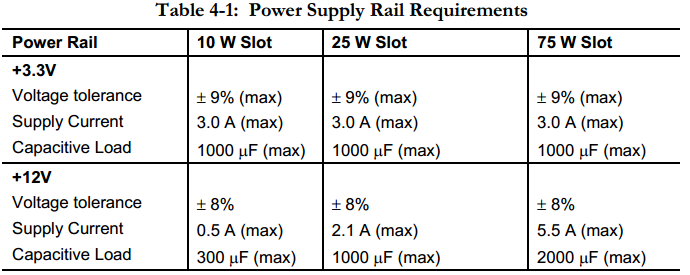


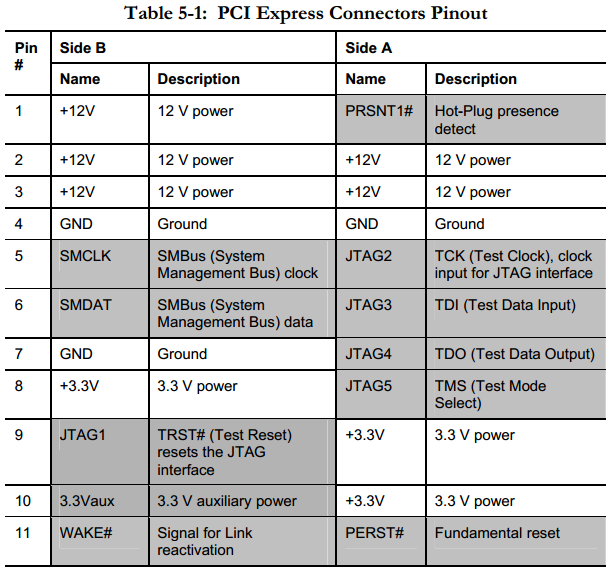
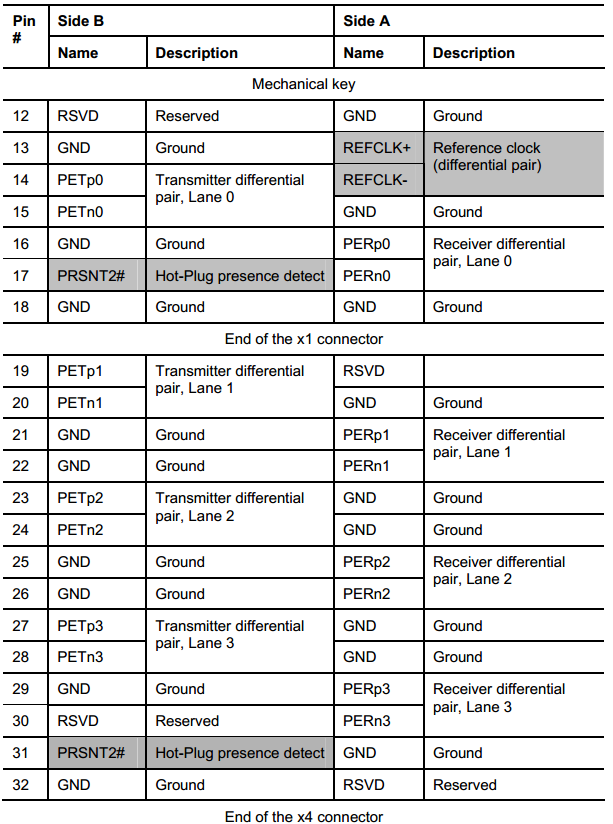
Difference Between PCI and PCI Express
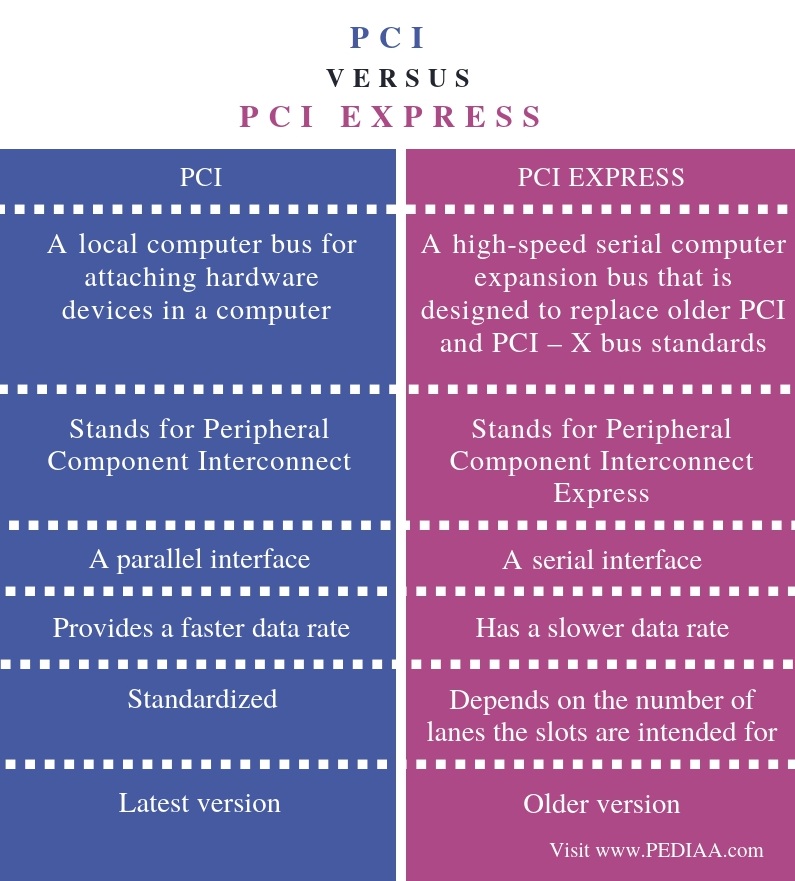
Definition
PCI is a local computer bus for attaching hardware devices in a computer. On the other hand, PCI Express is a high-speed serial computer expansion bus that is designed to replace older PCI and PCI – X bus standards.
Long Form
Moreover, PCI stands for Peripheral Component Interconnect while PCI Express stands for Peripheral Component Interconnect Express.
Interface Type
The main difference between PCI and PCI Express is that the PCI is a parallel interface while the PCI Express is a serial interface.
Speed
Speed is another difference between PCI and PCI Express. PCI Express provides a faster data rate than PCI.
Slot Type
While PCI slots are standardized, PCI Express depends on the number of lanes the slots are intended for.
Version
PCI Express is the latest version while PCI is the older version.
Conclusion
In brief, PCI Express is a newer version of PCI, which provides faster speed. The main difference between PCI and PCI Express is that PCI is a parallel interface while PCI Express is a serial interface.
Mini PCIE
Mini PCIE是为移动通讯设计,规格书:PCI Express Mini Card Electromechanical Specification。
The primary differences between a PCI Express add-in card (as defined by the PCI Express CardElectromechanical Specification) and a PCI Express Mini Card add-in card is a unique card form factor optimized for mobile computing platforms and a card-system interconnection optimized for communication applications. Specifically, PCI Express Mini Card add-in cards are smaller and have smaller connectors than standard PCI Express add-in cards
PCI Express Mini Card主要提供三种数据接口:PCI Express, USB(和DisplayPort)。

PCI Express Mini Card提供两种电源:3.3V和1.5V。
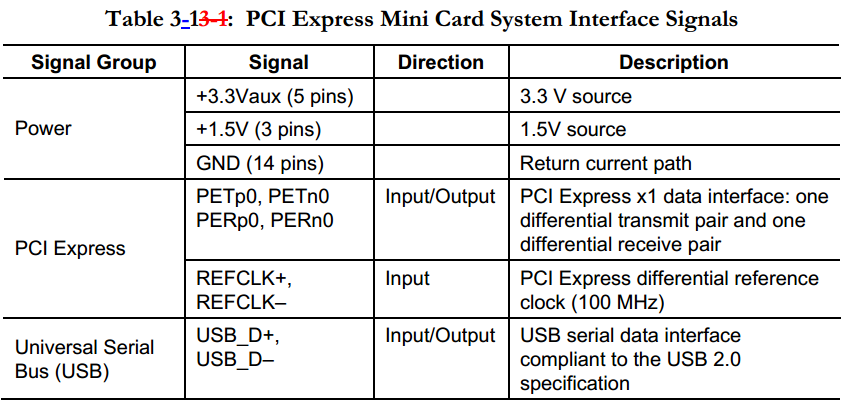
M.2
规格书:PCI Express M.2 Specification。
M.2比mini Card和half-mini Card尺寸和体积更小。
常见的样式有:A、B、M-key等。

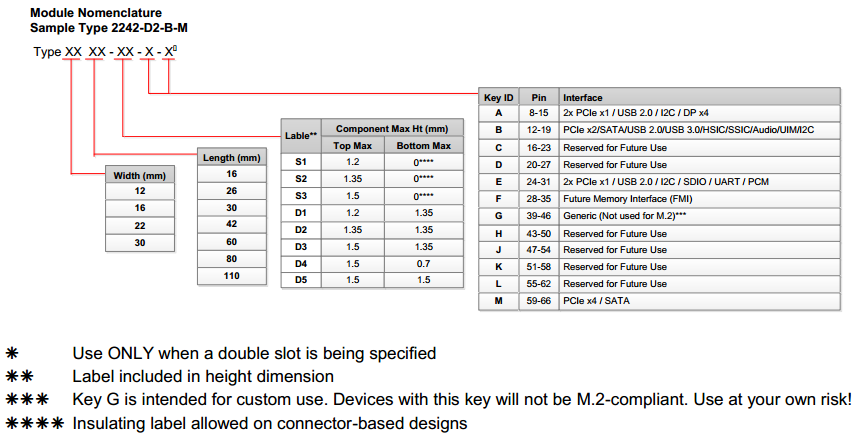
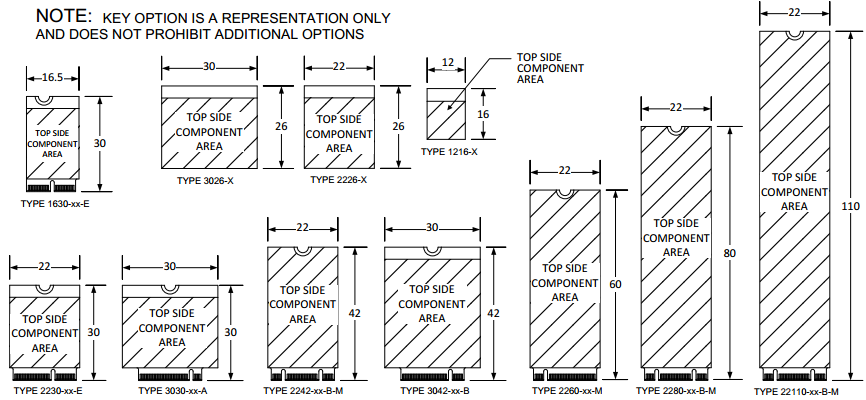
下图从左到右分别是:(1)A- and E-Key无线网卡;(2)、(3)B- and M-Key固态硬盘;(4)M-Key固态硬盘。
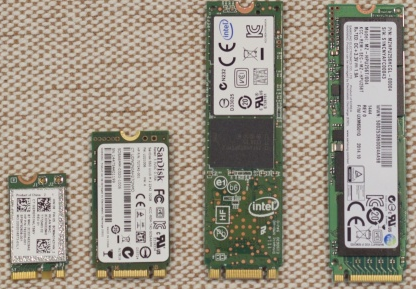
M.2包含多个主机接口:PCIe、PCIe LP,HSIC,SSIC,USB,SDIO,UART,PCM/I2S,I2C,SATA,Display Port等。
不同规格的板卡支持的功能不同,因此定义了3种socket来组合接口(常用的4G模块就是用WWAN/SSD,Socket2):

M.2电压为3.3V。

参考:
1. What is the Difference Between PCI and PCI Express
2. PCI-Express详解 百度文库
4. Mini PCIe vs. M.2 NGFF: How to Select the Best IoT Data Card Form Factors on the Road to 5G
最新文章
- Spring学习笔记(2)——Bean的配置
- 阅读笔记Multi-task Learning for Stock Selection [NIPS1996]
- Papa Parse – 超强大的多线程 CSV 文本解析库
- linux-查看系统是32位还是64位
- 深入揭秘HTTPS安全问题&连接建立全过程
- vue-cli#2.0 webpack 配置分析
- JQuery demo
- 《你是我的小羊驼》游戏ios源码
- Android NDK STL
- PHP中array_merge函数与array+array的区别
- NOIWC2018滚粗记
- angular-cli学习笔记 快速创建代码模板
- 【原创】运维基础之Docker(4)实用工具ctop
- 在 CentOS6 上安装 Zabbix2.4 Server
- P1494 [国家集训队]小Z的袜子(莫队)
- 【C#】Convert.ToInt32、(int)和int.Parse三者的区别
- repo命令详解
- 【转】Spring Framework灰度发布
- IDEA 调整 VM 配置文件(64位)
- execution表达式--小坑